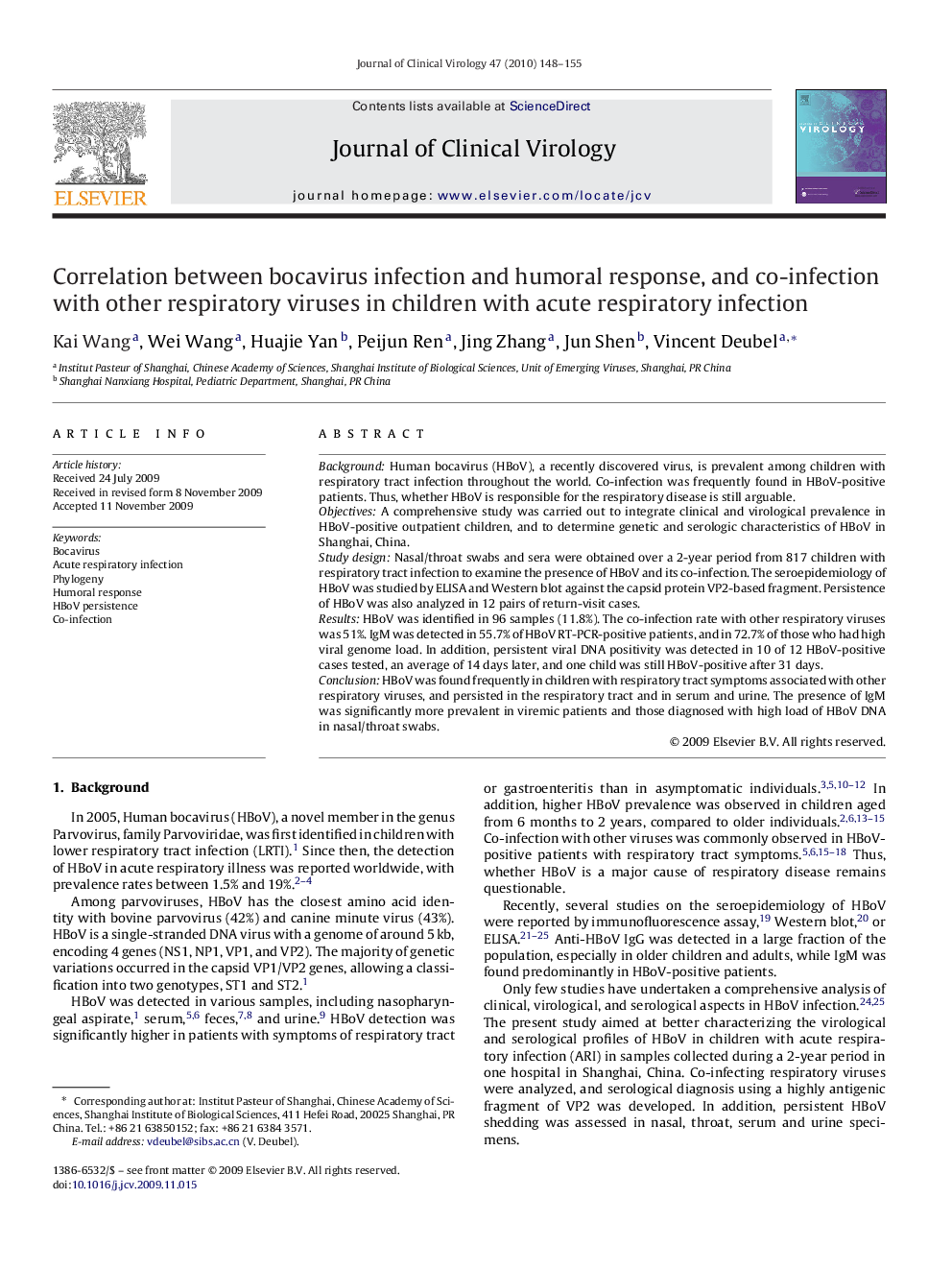| Article ID | Journal | Published Year | Pages | File Type |
|---|---|---|---|---|
| 3369934 | Journal of Clinical Virology | 2010 | 8 Pages |
BackgroundHuman bocavirus (HBoV), a recently discovered virus, is prevalent among children with respiratory tract infection throughout the world. Co-infection was frequently found in HBoV-positive patients. Thus, whether HBoV is responsible for the respiratory disease is still arguable.ObjectivesA comprehensive study was carried out to integrate clinical and virological prevalence in HBoV-positive outpatient children, and to determine genetic and serologic characteristics of HBoV in Shanghai, China.Study designNasal/throat swabs and sera were obtained over a 2-year period from 817 children with respiratory tract infection to examine the presence of HBoV and its co-infection. The seroepidemiology of HBoV was studied by ELISA and Western blot against the capsid protein VP2-based fragment. Persistence of HBoV was also analyzed in 12 pairs of return-visit cases.ResultsHBoV was identified in 96 samples (11.8%). The co-infection rate with other respiratory viruses was 51%. IgM was detected in 55.7% of HBoV RT-PCR-positive patients, and in 72.7% of those who had high viral genome load. In addition, persistent viral DNA positivity was detected in 10 of 12 HBoV-positive cases tested, an average of 14 days later, and one child was still HBoV-positive after 31 days.ConclusionHBoV was found frequently in children with respiratory tract symptoms associated with other respiratory viruses, and persisted in the respiratory tract and in serum and urine. The presence of IgM was significantly more prevalent in viremic patients and those diagnosed with high load of HBoV DNA in nasal/throat swabs.
